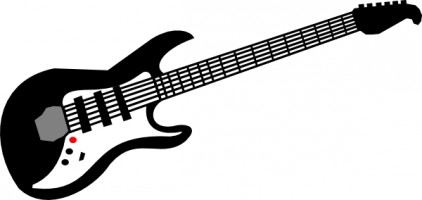If the modern HiFi amplifier or tube amplifier clips when you use it to play back audio recording, you are doing it wrong. With tube guitar amplifiers pushing it to clipping to get certain distorted sound is often intentional. Modern take to get the same guitar sound is to use DSP based effect pedals to get the right distorted sound that is fed to modern class D amplifier. Nothing is run physically to clipping.
Here are some links to information on guitar effects:
Most DISTORTED Guitar Tone Possible?!
https://www.youtube.com/watch?v=TkO-yau7jdQ
What does distortion look like?
https://www.youtube.com/watch?v=pFSX93aPzmw
Understanding Distortion (Pt2) – Diode Clipping circuits
https://www.youtube.com/watch?v=6Qs1H2qTAWI
Demonstration of Overdrive, Distortion and Fuzz effects on oscilloscope and with a guitar signal
https://www.youtube.com/watch?v=8NjeHHroOgI
The World’s Largest Guitar Pedalboard (world record)
https://www.youtube.com/watch?v=iWRfLuJ_NKw
She sings through guitar pedals and it sounds AMAZING
https://www.youtube.com/watch?v=77iUH208XaI
Modeling A Guitar For Circuit Simulation
https://hackaday.com/2023/08/19/modeling-a-guitar-for-circuit-simulation/
Guitar effects have come a long way from the jangly, unaltered sounds of the 1950s when rock and roll started picking up steam. Starting in large part with [Jimi Hendrix] in the 60s, the number of available effects available to guitarists snowballed in the following decades step-by-step with the burgeoning electronics industry. Now, there are tons of effects, from simple analog devices that would have been familiar to [Hendrix] to complex, far-reaching, digital effects available to anyone with a computer. Another thing available to modern guitarists is the ability to model these effects and guitars in circuit simulators, as [Iain] does.
[Ian] plays a Fender Stratocaster, but in order to build effects pedals and amplifiers for it with the exact desired sound, he needed a way to model its equivalent circuit. For a simple DC circuit, this isn’t too difficult since it just requires measuring the resistance, capacitance, and inductance of the overall circuit and can be done with something as simple as a multimeter. But for something with the wide frequency range of a guitar, a little bit more effort needs to go into creating an accurate model. [Iain] is using an Analog Discovery as a vector network analyzer to get all of the raw data he needs for the model before moving on to some in-depth calculations.
Guitar Pickup Equivalent Circuits
https://macalisterelectronics.com/guitar-pickup-equivalent-circuits.html
An equivalent circuit of a guitar’s pickups, tone/volume controls and cable is useful when designing input stages for effects pedals or amplifiers. It makes simulations or calculations of how input networks modify the spectrum of the guitar’s output more realistic. This article covers some background on the topic and then goes into a technique for measuring the output impedance of a guitar and how to deduce the values of an equivalent circuit from the measurement. The equivalent circuit of a Stratocaster are given in the Conclusion at the end of this page.
Sebastian of Baltic Lab demonstrates how to implement overdrive and distortion effect DSP algorithms on the Arduino GIGA R1 WiFi
https://baltic-lab.com/2023/08/dsp-diode-clipping-algorithm-for-overdrive-and-distortion-effects/
Open Source Analog Effects Pedal
A modular platform for developing and trading guitar (and other) audio effects. Focus on, but not limited to, pure analog signal path.
https://hackaday.io/project/2311-open-source-analog-effects-pedal
Guitar Distortion With Diodes In Code, Not Hardware
https://hackaday.com/2023/08/23/guitar-distortion-with-diodes-in-code-not-hardware/
Guitarists will do just about anything to get just the right sound out of their setup, including purposely introducing all manner of distortion into the signal. It seems counter-intuitive, but it works, at least when it’s done right. But what exactly is going on with the signal? And is there a way to simulate it? Of course there is, and all it takes is a little math and some Arduino code.
https://baltic-lab.com/2023/08/dsp-diode-clipping-algorithm-for-overdrive-and-distortion-effects/
Guitar Effects With No (Unwanted) Delay
https://hackaday.com/2021/03/15/guitar-effects-with-no-unwanted-delay/
Raspberry Pi Pico – Guitar To MIDI
https://www.youtube.com/watch?v=Fu0Qsz2h3HE

12 Comments
mapquest directions says:
MapQuest Directions is an online platform that provides users with maps, driving directions, and other navigation features. It is one of the most popular and trusted navigation services in the world, with millions of users every day.
Tomi Engdahl says:
The 1.5-Watt Amp Responsible for Brian May’s Massive Sound
The story behind the Deacy Amp.
Jan 12, 2024 by JustinBeckner [UG Writer] 10,665
https://www.ultimate-guitar.com/articles/features/the_15-watt_amp_responsible_for_brian_mays_massive_sound-160990?utm_term=Autofeed&utm_medium=Social&utm_source=Facebook&fbclid=IwAR1K8BmfudV40CdcE9WqUINhaykB9ImVO6CDiXJXu1ySbbDdswTK3t49l1M
Tomi Engdahl says:
Neural Amp Modeler is an open-source project that uses deep learning to create models of guitar amplifiers and pedals with state-of-the-art accuracy.
https://www.neuralampmodeler.com/
https://github.com/sdatkinson/neural-amp-modeler
https://suuntakuvio.fi/neural-amp-modeler/
https://bedroomproducersblog.com/2023/03/14/neural-amp-modeler/
Tomi Engdahl says:
https://muusikoiden.net/keskustelu/posts.php?c=15&t=247503&o=0
Tomi Engdahl says:
https://www.youtube.com/watch?v=CNFj4oeD2E8
Neural Amp Modeler ONLINE web player demo
Tomi Engdahl says:
“Technology is coming along. It’s going to keep getting better to the point that maybe they will replace tube amps for a lot of people”: Eric Johnson has been experimenting with amp modelers, but he still isn’t fully convinced – here’s why
By Matt Owen published February 05, 2024
The gear purist branched out when he began exploring the Neural DSP Quad Cortex last year – but as things stand, he’s not going to make the switch permanent just yet
https://www.guitarworld.com/news/eric-johnson-amp-modelers-update
Tomi Engdahl says:
https://fi.wikipedia.org/wiki/Kaikulaite
https://www.spelektroniikka.fi/p5692-jousikaikutankki-3bb2a1b-fi.html
Tomi Engdahl says:
https://emute.edu.fi/studio-ja-aanitekniikka/prosessointi-osa-5-kaiku
Tomi Engdahl says:
You Can DIY! Build the Mojo Maestro
https://audioxpress.com/article/you-can-diy-build-the-mojo-maestro
https://youtu.be/oua_dLgW6i4?si=Ahd5PyK_203pB84a
Tomi Engdahl says:
https://audioxpress.com/article/you-can-diy-build-the-mojo-maestro
Tomi Engdahl says:
Fuzz shootout
https://youtu.be/XiJS7-68RsA?si=Ynp5rpn2zLTpwB4i
Tomi Engdahl says:
https://www.levytukku.fi/fuzz-pedaalit